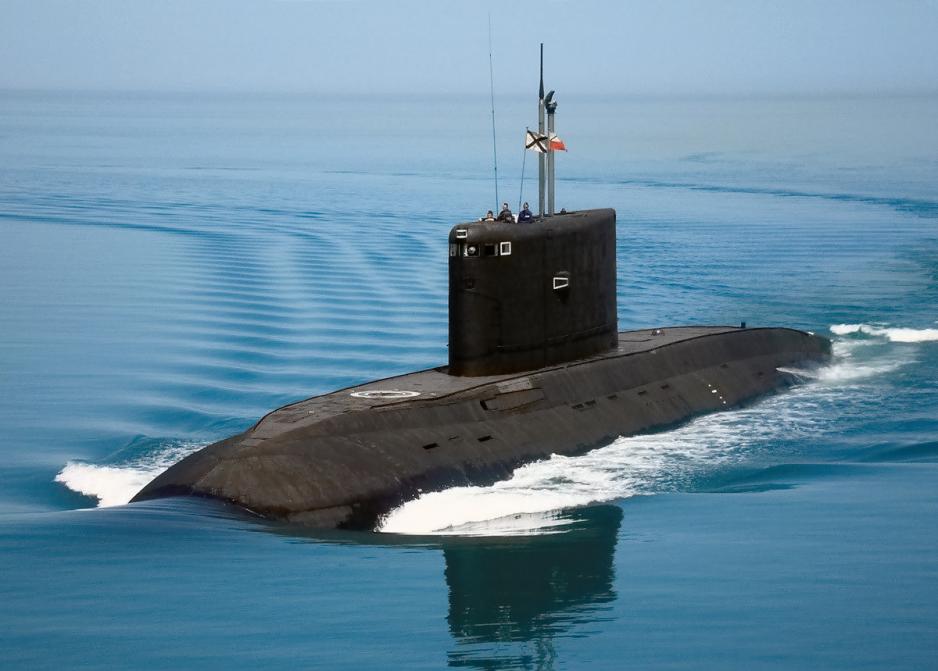Invisible contest: The submarine cat-and-mouse game

The United States and NATO have the most advanced submarines and surveillance equipment in the world. But Russian as technology rapidly improves, the Western under-water lead is shrinking. The US is concerned, and keeps a particularly close eye on what happens in the waters off Norway’s coast.
Click here for Norwegian version.
New York Times recently had a first page article about the expanding rivalry and military buildup between the United States and Russia. The intensity of Russian submarine patrols has increased considerably over the past couple of years, and it is the growing activity level in the GIUK gap, the area between Greenland, Iceland and the UK, which especially worries Washington. While Russia has strengthened its submarine capacity since the end of the Cold War, most NATO countries have cut defense spending and lost some or all of its ability to keep track of Russian activities in this ocean area. The US and NATO have retained technological superiority, but the technology gap has shrunk considerably over the past decade. In 2008, Russia initiated a military modernization program, including development of quieter submarines, capable of escaping Western surveillance, and development of an underwater drone carrying nuclear weapons. American experts expect that Russia by 2020 will have modernized most of its military equipment, and US military leaders and their supporters are adamant that Western defense budgets must be increased in order to keep up.
Weakened surveillance capacity
Magnus Nordenman, director of the Transatlantic Security Initiative at the Atlantic Council in Washington, warns that the West has lost important parts of its surveillance capacity in the north.
- Westerns surveillance ability of the GIUK gap, which frequently is referred to as the GIUK-Norway gap, is weaker than it was during the Cold War. The UK and the Netherlands closed down their surveillance patrols several years ago. The UK is now rebuilding its fleet and plans to but P-8 Poseidon aircraft, but this is still a couple of years away. Norway has its Orion aircraft, but they are old and have limited capacity. And Russia has made major investments in their submarines, the crown jewels of the Russian military, says Nordenman.
Gateway to the Atlantic
For Russian subs stationed at the Kola peninsula, the GIUK gap is the gateway to the Atlantic.
Nordenman points to Russia’s recently updated national security and maritime strategy, which clearly states that Russia must seek access to the Atlantic. That access goes through the GIUK gap, which explains the frequent submarine traffic through the area. Russian subs have been spotted close to the east coast of the United States, and they operate in close proximity to fiber optic cables carrying enormous amounts of internet data between the continents. A mishap in this environment would be disastrous, and an attack would be catastrophic.
- We are in what I would call “a long term moment of tension” with Russia, says Nordenman, and emphasizes that a crisis elsewhere, such as in the Baltic Sea, would make access to the Atlantic imperative for Russia.
Stronger US presence
The United States are reawakening their Keflavik air base in Iceland, where P-8 Poseidon aircraft will have what the US military calls a “persistent, but not permanent” presence. This will be an important strengthening of the ability to track submarine traffic. The US will also send 12 F-15 aircraft and 350 airmen to Iceland and the Netherlands, for support and training.
Increasing budgets
The recent incident in the Baltic Sea, where two Russian jets came dangerously close to the US war ship “USS Donald Cook”, has renewed fears that an unintended mishap could spin out of control and cause a serious conflict. President Obama has chosen not to confront president Putin over the incident, keeping the topic off the list in a recent phone conversation, but others, such as Secretary of State John Kerry, have strongly condemned the Russian behavior. Members of Congress have also used strong rhetoric to decry what they see as Russian aggression. The 2017 defense budget is now making its way through Congress, and high-ranking Members have warned that the budget will “scare Russia”. Among other things, Congress is expected to sign off on 3.4 billion dollars for the European Reassurance Initiative (ERI), designed to support European allies. This is a quadrupling from the 2016 ERI budget.
The US Navy is also expected to receive a healthy increase in next year’s budget, including resources for an expansion from the current 272 ships to 350. This will intensify navy shipbuilding to the highest level since president Reagan’s time in the 1980s.
The contest continues, on the surface and under water. In the New York Times, former admiral and supreme allied commander of NATO James Stavridis, says that we are not quite back in a Cold War:
- But I sure can see on from where we are standing.
The view from Norway’s coast might be particularly clear.

